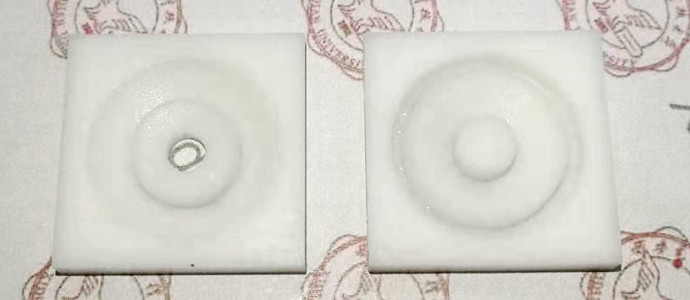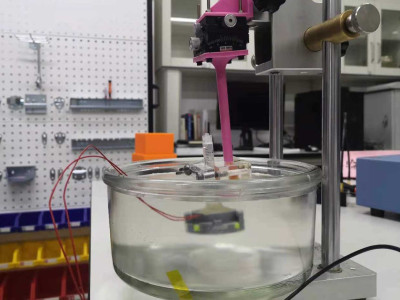
WHY THIS MATTERS IN BRIEF
The future is 3D and that includes real light based holograms complete with objects you can feel and manipulate in mid air.
 Love the Exponential Future? Join our XPotential Community, future proof yourself with courses from XPotential University, connect, watch a keynote, or browse my blog.
Love the Exponential Future? Join our XPotential Community, future proof yourself with courses from XPotential University, connect, watch a keynote, or browse my blog.
Holograms seem to be everywhere at the moment, whether it’s Samsung’s holographic TV’s, and prototype holodecks, holographic gaming tables, and holographic frogs in boxes, or whether it’s holograms that are the real deal – true 3D free air holograms that finally brig Star Wars’ holographic Princess Leia to life.
As great and as ground breaking as most of these are though there’s another type of hologram that’s been living in the shadows of its light based cousins – Acoustic Holograms, holograms made not out of light but sound which, for example, has multiple applications including letting people “feel” objects in mid air.
First developed in the 1960s and ‘70s acoustic holography as a field has been hampered by rampant noise created by widespread reflection and scattering, and while lasers can be used to limit light scatter for conventional optical holograms ultrasound based holograms, as yet, don’t have such a quick fix.
Now though in a recent study published last month in IEEE Sensors Journal, a group of researchers have announced that they’ve developed an improved method for creating acoustic holograms that yields higher sensitivity and a better focusing effect than previous acoustic hologram methods.
The “Acoustic lenses” and the setup used
There are a number of intriguing possibilities that come with manipulation using sound, including medical applications. Ultrasound can penetrate human tissues and is already used for medical imaging. But more precise manipulation and imaging of human tissues using 3D holographic ultrasound could lead to completely new therapies, including targeted neuromodulation using sound. The nature of sound itself poses the first hurdle to be overcome.
“The medical application of acoustic holograms is limited owing to the sound reflection and scattering at the acoustic holographic surface and its internal attenuation,” explains Chunlong Fei, an associate professor at Xidian University who is involved in the study.
To address these issues, his team created their acoustic hologram via a “lens” consisting of a disc with a hole at its center. They placed a 1 MHz ultrasound transducer in water and used the outer part of the transducer surface to create the hologram. By creating a hole in the center of the lens, the center of the transducer generates and receives soundwaves with less reflection and scattering.
Next, the researchers compared their new disc approach to more conventional acoustic hologram techniques. They performed this A vs. B comparison via ultrasound holographic images of several thin needles, 1.25 millimeters in diameter or less.
“The most notable feature of the hole-hologram we proposed is that it has high sensitivity and maintains good focusing effect [thanks to the] holographic lens,” says Fei. He notes that these features will lead to less scattering and propagation loss than what occurs with traditional acoustic holograms.
Fei envisions several different ways in which this approach could one day be applied medically, for example by complementing existing medical imaging probes to achieve better resolution, or for applications such as nerve regulation or non-invasive brain stimulation. However, the current set up, using water, would need to be modified to be more suitable for medical setting, along with several next steps related to characterizing and manipulating the hologram, says Fei.
The varied design improvements Fei’s team hopes to develop match the equally eclectic possible applications of ultrasonic hologram technology. In the future, Fei says they hope acoustic holographic devices might achieve super-resolution imaging, particle trapping, selective biological tissue heating – and even find new applications in personalized medicine. As well as letting you play awesome air guitar …


















